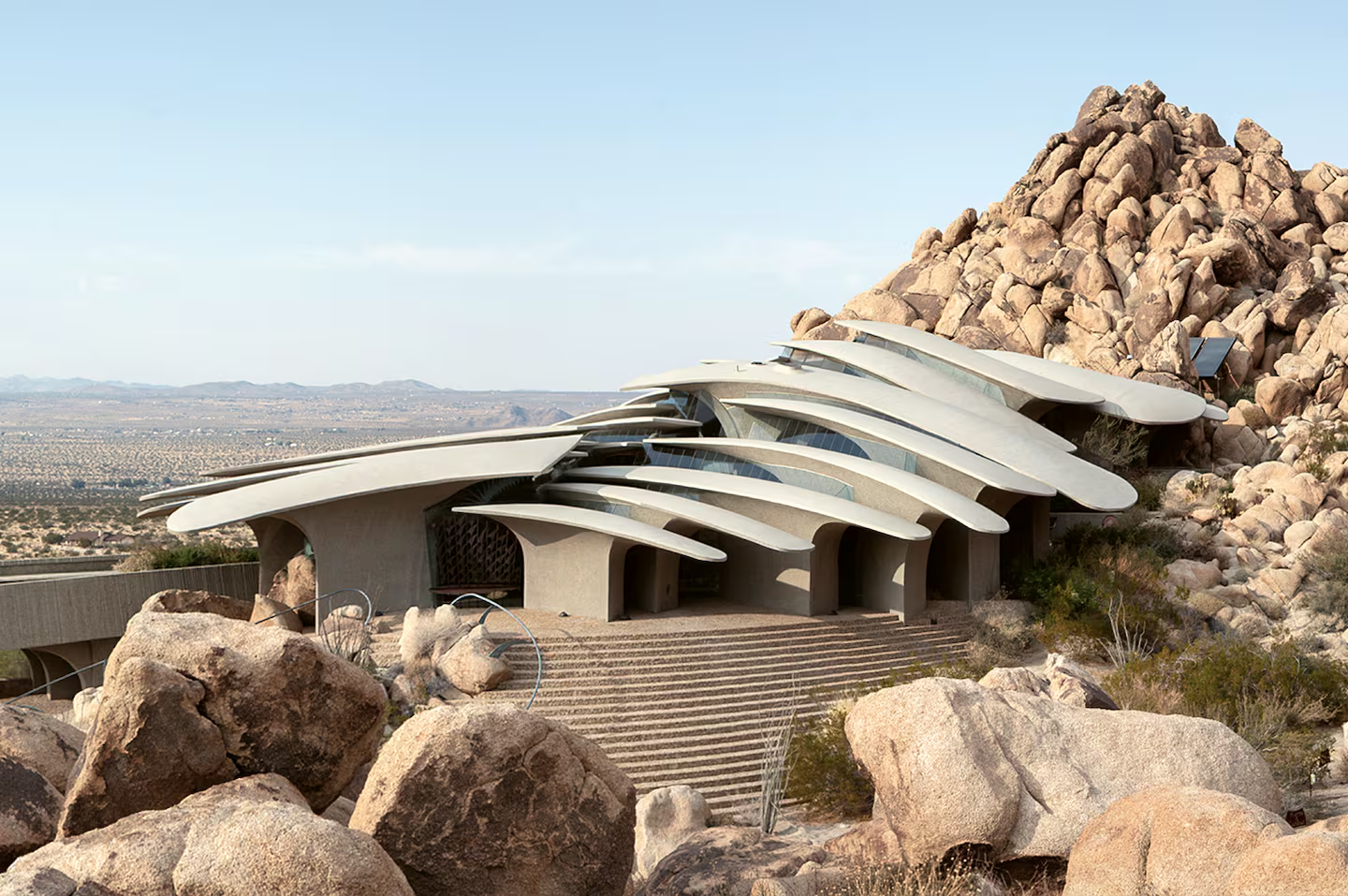Architecture at One with Nature.
20.11.2025Contemporary architects are increasingly attempting to realise their projects in partnership with the natural environment, reflecting its beauty in the process. “Humans have an innate tendency to romanticize our interactions with nature but, throughout history, the relationship has been complex, often even veering towards reckless exploitation. While we like to think of the past as a time when we, as a species, were more in touch with the natural world, the truth is that nature’s power and apparently random fury has often made us turn away from it.” writes Luxury Defined, the online magazine of Christie’s International Real Estate, in an article well worth reading, illustrating its findings with numerous examples.
The article describes a growing architectural philosophy that seeks genuine harmony with nature rather than imposing human structures upon it. Contemporary architects aim to design buildings that feel like companions to the landscape – places that draw their character, materials, and atmosphere from their surroundings. This shift reflects a deeper belief that architecture is not merely about usable space, but about shaping relationships: between people, their environment, and their sense of well-being.
To achieve this, architects increasingly use organic, locally sourced materials and forms that echo the terrain. They dissolve the boundary between innen und aussen through expansive glazing, terraces, green roofs, and living walls, allowing light, wind, and vegetation to flow naturally through the home. These spaces are created to evolve with time, embracing the growth of plants and the patina of weather, so that the architecture ages like a natural element rather than a static object.
Luxury Defined also highlights how this approach supports sustainability and human health. By working with natural forces – sunlight, ventilation, native plant life – buildings reduce their environmental impact while giving residents a calmer, more grounded daily experience. Gardens in this context are no longer formal ornaments but integral, untamed ecosystems woven into the design. Ultimately, the movement reflects a cultural desire to reconnect with the wild, to live in a way that acknowledges both the beauty and the wisdom of the natural world.
The article shows how the view of nature in architecture has changed over the last few centuries. In the late 18th century, Europeans built their houses facing away from the sea, as no one wanted a view that was so full of danger, a graveyard for many living in coastal communities. “The European attitude – which spread to the New World – was that nature, if it were not to be dominated and exploited, should at least be controlled. Wherever possible, land must be made useful through agriculture or forestry. For those with wealth, nature could always be improved upon. France was famous for its rigidly formal gardens and exported its designs and influence across Europe so that, for much of the early modern period, anyone aspiring to taste had a completely symmetrical layout of precisely clipped and placed planting.” the online magazine stated.
“What started as a faintly hippie concept – that we should do as little harm to the natural world as possible – has grown over the past few decades in line with the rise of environmentalism and a fear that humans have caused irreparable damage to the planet. Hard standing and concrete have given way to wood cladding and natural stone. But the most striking change is the lack of formality around the homes. Rather than building a wall marking a boundary and containing a man-made landscape, architects are now working with landscapers to create a seamless flow from the natural realm to the building itself. Planting may be more purposeful, but it will still mimic the forest or pastures around it. If trees need to be removed to make way for constructions, new ones will be planted.”
The article in Luxury Defined was written by Gela Pertusini who was property editor of The Daily Telegraph and has written for The Times, The Guardian, and The Independent. Read the full article here.




